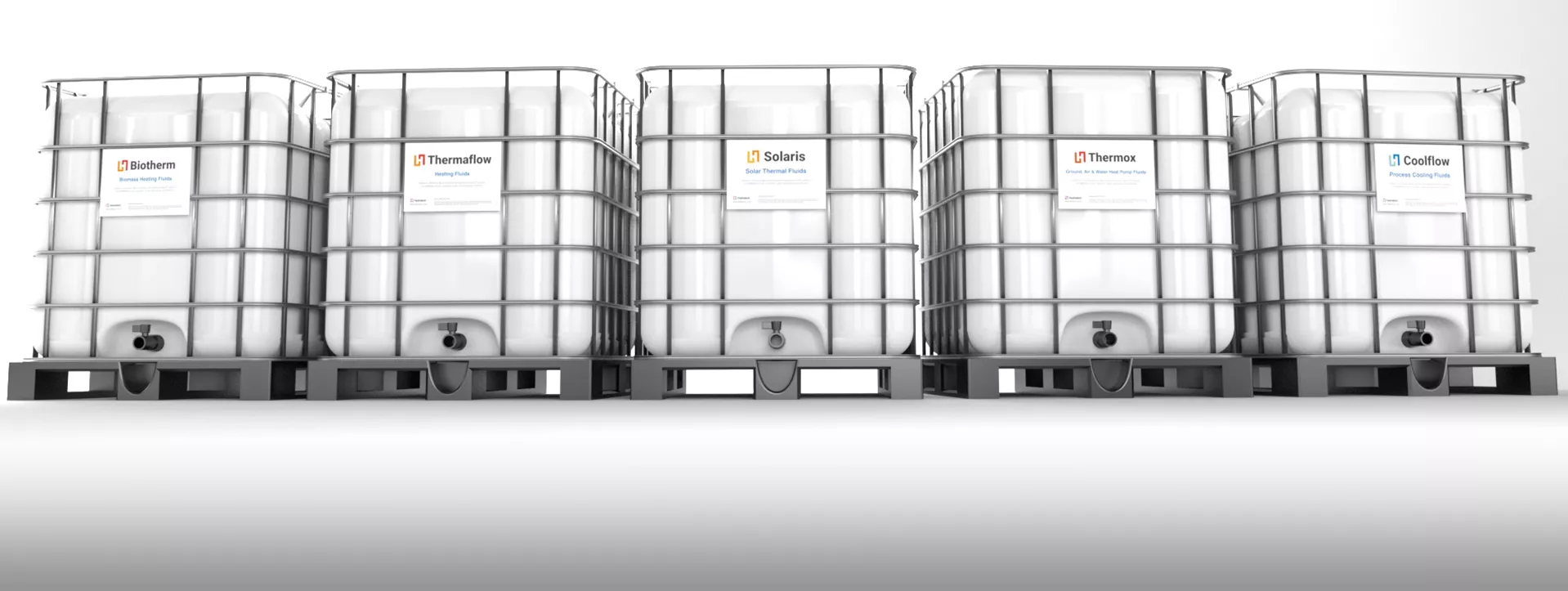Glycol & Antifreeze Products
Hydratech’s high performance glycol and antifreeze solutions are formulated to maximise CoP via a comprehensive understanding of fluid dynamics and thermodynamics.
More about Glycol & Antifreeze ProductsOperational pHEffective over a wide pH range (8 - 13)
Operational TemperatureStable up to 80°C
Effective against:
Appearance:Clear beige to brown liquid
Consistency:Low viscosity
Density:1.01 - 1.1 g/cm³
Odour:Characteristic to BIO2
Foam:Low foam
pH:13.6 - 14.3
Active Biocide:BIT
Available in: 1, 5, 20 litre containers ( bulk containers & tankers available on request )
Always take a system fluid sample prior to any remedial works to establish the fluid condition. Our Fluid Management or Fluid Monitoring services may be of interest if you need assistance.
Recommended dosing for a clean system (preventative dose):
5 litres per 2000 litres of system volume, or 0.25% v/v of the overall system.
Recommended dosing for a contaminated system (shock dose):
10 litres per 2000 litres of system volume, or 0.5% v/v of the overall system.
Recommended dosing for a scheduled dosing (maintenance dose):
4 litres per 2000 litres of system volume, or 0.2% v/v of the overall system every six months.
We suggest sampling and analysing system fluids biannually to catch any issues early.
Or call one of our fluid specialists and we'll talk you through our products and help you find the best fluid for your system.

Hydratech’s high performance glycol and antifreeze solutions are formulated to maximise CoP via a comprehensive understanding of fluid dynamics and thermodynamics.
More about Glycol & Antifreeze ProductsRegular analysis can extend the life of both fluid and system. Hydratech’s Fluid Monitoring Program (FMP) is a very straight forward, effective way to proactively monitor closed-loop system condition.